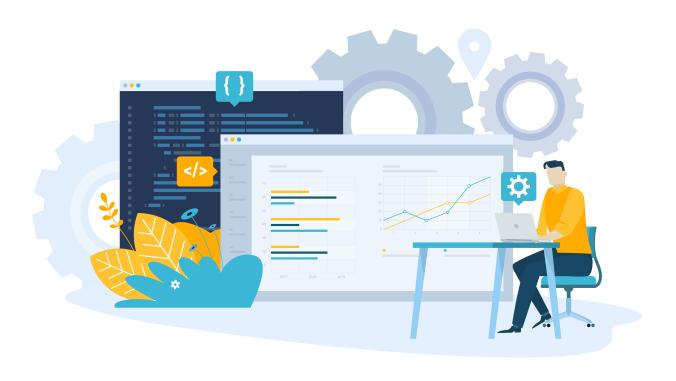Cities need sustainable goods delivery plans
Why roadmaps for moving people must be considered alongside future strategies for freight and logistics.

Executing logistics operations can seem boring to those not directly involved: When it works, it is boring. Goods are picked (from fields or warehouse shelves), packaged, shipped and delivered to the loading docks of a business or a person's front door. When clicking the infamous e-commerce "buy" button, most people don’t think about what has to happen next.
At least they don’t think about it until they’re stuck behind a delivery truck that’s double-parked on a city street while the driver unloads crates of vegetables for tonight’s two-star meal or carries packages into an apartment building. While sitting in a single passenger vehicle and fuming at a branded roadblock, drivers rarely connect the dots between their expectations and what it takes to meet them.
Many cities have developed strategies to move people more efficiently and safely within the urban environment. Much less attention has been paid to the importance of delivering goods to people at work and home. While conducting a recent research project, the GreenBiz Research team learned that city leaders need to broaden their perspective to understand the tradeoffs involved in moving people, as well as the goods and services they require, when planning for a healthy, safe and equitable urban environment.
Battling pollution and congestion
GreenBiz recently partnered with UPS to conduct research that formed the basis of a new report, "The Road to Sustainable Urban Logistics (PDF)." To understand the driving forces behind efforts to make urban logistics more sustainable, we interviewed city leaders, academics, fleet operators, nonprofits, retail organizations and other subject matter experts.
We also collected more than 600 responses from the sustainable business leaders who make up the GreenBiz Intelligence Panel. When we asked the panel to name the top two issues that businesses are concerned about in the urban environment, it wasn’t a surprise that 58 percent identified air quality and 53 percent noted traffic congestion. Many cities have concentrated on personal transportation and the mass transit solutions designed to alleviate these issues, and those efforts are showing some results.
When clicking the buy button, most people don’t think about what has to happen next.
What was surprising is how few cities have developed goods movement plans. During our research, we talked with Anne Goodchild, director of the Urban Freight Lab at the University of Washington. She told us that most cities do not have a freight plan. "They have a transportation plan, a bike master plan, a transit master plan. But freight has not been something cities have been planning for," she said.
Businesses already see this as an issue: 95 percent of those surveyed by GreenBiz recognized the business challenges that freight poses in growing cities. Our survey respondents identified the biggest barriers to more efficient and sustainable urban logistics as insufficient collaboration across sectors (65 percent) and lack of critical infrastructure (64 percent). Our research also shows that there is a way to navigate toward an urban environment with reduced congestion, better air quality, enhanced safety and greater mobility access resulting in a better urban experience and a healthier quality of life.
The future is data-driven and collaborative
Problems can arise for cities that implement initiatives without considering an overall freight and logistics plan. It is imperative that planners capture the data and use tools that can help plan for a more sustainable infrastructure for goods transport and delivery. There are too many examples of initiatives that resulted in greater congestion because they were based on faulty assumptions.
According to Goodchild, "What happens in the absence of data is that cities come up with ideas and then implement them without a lot of participation from the private sector, or without a lot of insight into what the impact will be." This points to the important role that businesses, and especially logistics providers, can play in improving the quality of the urban environment.
Logistics companies are staffed with industrial engineers who seek to optimize delivery routes far more granularly than just applying a "no left turns" strategy. These firms partner with research institutions such as University of Washington’s Urban Freight Lab and MIT’s Megacities Logistics Lab. Along with non-profits such as the Rocky Mountain Institute and the World Resources Institute (WRI), this collection of organizations can bring on-the-ground experience and global expertise to address a particular city’s unique urban landscape.
The biggest barriers to more efficient and sustainable urban logistics are insufficient collaboration across sectors and lack of critical infrastructure.
When asked which stakeholders should be engaged to address congestion and other mobility-related issues in urban environments, our survey respondents answered that, in essence, everyone should have a seat at the table.
When we talked with Ani Dasgupta, global director of the Ross Center for Sustainable Cities at WRI, he shared how his organization "often finds that even inside a city administration, different departments are not talking to each other as much as they should. This is why it is important to bring cities and businesses and communities and civil society together."
By partnering with natural conveners such as academic labs and NGOs, becoming more data-driven in analyzing the unique constraints in their city and the impact of new technologies and solutions, and engaging and educating a wide range of stakeholders, urban leaders can help make goods delivery boring once again.





